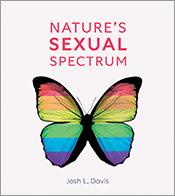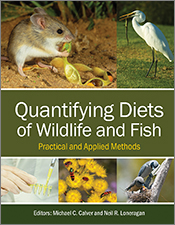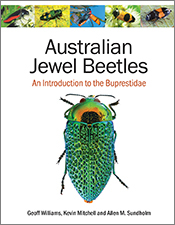Forest Pattern and Ecological Process
A Synthesis of 25 Years of Research
By: David LindenmayerA major synthesis of 25 years of intensive research about the montane ash forests of Victoria.
Forest Pattern and Ecological Process is a major synthesis of 25 years of intensive research about the montane ash forests of Victoria, which support the world's tallest flowering plants and several of Australia's most high profile threatened and/or endangered species. It draws together major insights based on over 170 published scientific papers and books, offering a previously unrecognised set of perspectives of how forests function. + Full description
The book combines key strands of research on wildfires, biodiversity conservation, logging, conservation management, climate change and basic forest ecology and management. It is divided into seven sections: introduction and background; forest cover and the composition of the forest; the structure of the forest; animal occurrence; disturbance regimes; forest management; and overview and future directions.
Illustrated with more than 200 photographs and line drawings, Forest Pattern and Ecological Process is an essential reference for forest researchers, resource managers, conservation and wildlife biologists, ornithologists and mammalogists, policy makers, as well as general readers with interests in wildlife and forests.
2010 Whitley Certificate of Commendation for Zoological Text.
- Short descriptionNews
This title is no longer available in print format, but can still be purchased as an eBook via the eRetailer links above.
Reviews
"One thing I particularly like about this book is the ease at which you can read it and seek out information and further reading. The book is also terrifically illustrated with over 200 photographs and line drawings."
Lisa Cawthen, Austral Ecology, pp. 24–e25, Vol 37 2012
"The publication of this unified review of the research achievements and the problems facing the forests of southeast Australia should assist in the development of a conservation programme."
Peter Moore, Bulletin of the British Ecological Society, June 2011, 42:2, p.61-2
"All readers will be inspired by this book to delve further into the detail of the non-tree components of the montane ash forests…a superb job of synthesising 25 years of research into very easily read and understood text, from which students of ecology, biodiversity management, natural resource management and the like, will benefit."
Roger Good, Australasian Plant Conservation, Vol 18, March-May 2010
"It would be really good if all such monitoring projects produced such readable outputs. Lindenmayer states that 'if he is lucky enough to still be working in these forests in 2034 there might be a second edition of this book.' Let’s hope so!"
R H Marrs, Biological Conservation 143, 2010
Details
ePDF | October 2009ISBN: 9780643098305
Publisher: CSIRO Publishing
Available from eRetailers
ePUB | October 2009
ISBN: 9780643100008
Publisher: CSIRO Publishing
Available from eRetailers
Features
- The extent of synthesis at a range of key levels
- The depth of new perspectives on forest processes and ecological patterns in one of the world’s truly great forests – the montane ash forests
- The breadth of past and very current research that is both pure and applied
- The range of key topics and how they are inter-twined – wildfires, biodiversity conservation, logging, conservation management, climate change and basic forest ecology and management.
Contents
PreamblePreface
Acknowledgements
Part I: Introduction and background
Chapter 1: Introduction
Chapter 2: Background
Chapter 3: Field survey methods
Part II: Forest cover and composition of the forest
Chapter 4: The ash-type eucalypt forest
Chapter 5: The rainforest
Part III: The structure of the forest
Chapter 6: Key structural features: overstorey trees with hollows
Chapter 7: Key structural features: understorey trees and the shrub layer
Chapter 8: Key structural features: logs
Part IV: Animal occurrence
Chapter 9: Distribution and abundance of individual species
Chapter 10: Viability of populations of individual species
Chapter 11: Composition of animal communities
Part V: Disturbance regimes
Chapter 12: Natural disturbance regimes: fire
Chapter 13: Human disturbance: logging
Chapter 14: Salvage logging effects
Part VI: Forest management and biodiversity conservation
Chapter 15: Reserves
Chapter 16: Mitigating logging impacts
Chapter 17: Monitoring
Part VII: Conclusions and future directions
Chapter 18: Conclusions and future directions
Bibliography
Index








